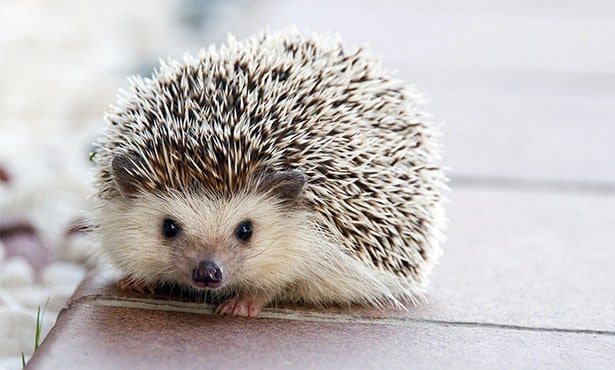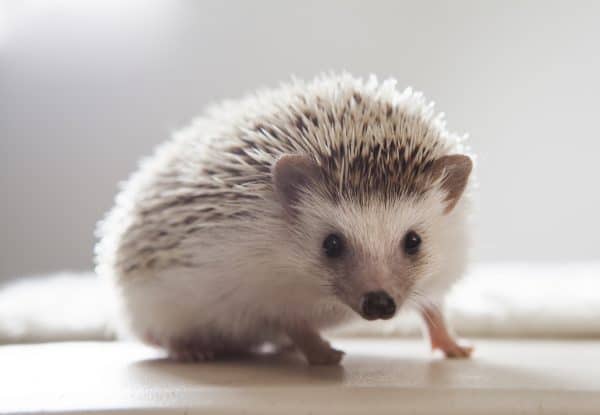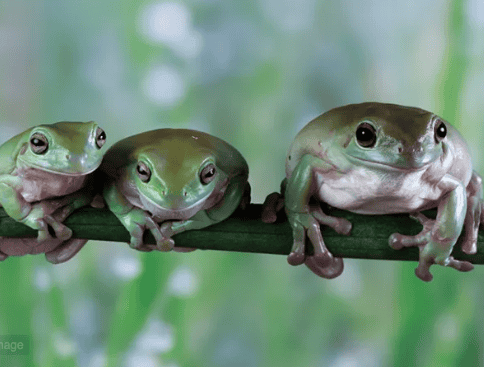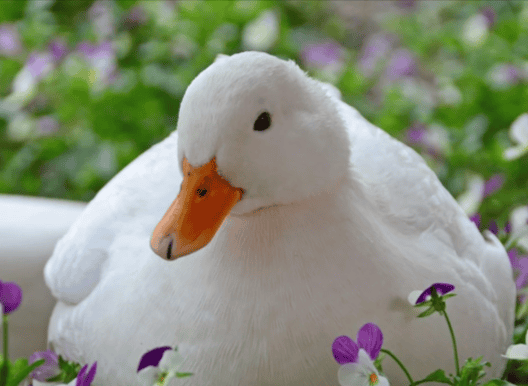When people think about adopting a pet, hedgehogs aren’t usually the first creature that comes to mind.
Though with proper care, they can become just as loving as any other domestic animal.
But what, exactly, is a hedgehog?

Hedgehogs are a species of animal belonging to the scientific family Erinaceidae. They are not related to rodents, despite their physical similarities–however, they are distant relatives of shrews.
Compared to rodents, hedgehogs have a slightly longer lifespan: both in the wild and in captivity, between 4-7 years.
Despite their popularity as pets in the United States, no hedgehog species are native to North America.
Rather, they naturally live in Europe, Africa, Asia and New Zealand.
Like porcupines, hedgehogs are protected by an array of quills along their back. When threatened, the hedgehog curls up into a ball to protect its face and lower body, completely exposing the spines. Unlike porcupine quills, which can break off from the porcupine’s body, hedgehog quills remain permanently attached.
Except when a hedgehog starts to reach adulthood, in which case a new set of quills replaces the old ones. (for comparison, think of how baby teeth in humans eventually give away to adult teeth.)
Hedgehogs for Beginners
The sale of domestic hedgehogs is a relatively recent trend: in the United States, the sale of pet hedgehogs only began in the 1980s. Because they are still fairly uncommon, there exists a lot of confusion on whether or not they are good pets for beginners.
The truth of the matter is that raising a hedgehog isn’t too different from raising a rodent like a hamster or guinea pig. They require similarly sized enclosures, along with plenty of enrichment and exercise equipment.
They are also mainly nocturnal creatures.
(Something for light sleepers to keep in mind.)
Hedgehogs are also solitary creatures, though they will occasionally accept other hedgehogs as companions.
If two domesticated hedgehogs live together, it’s best to keep an eye on them: if they fight, they will have to be permanently separated to keep them from attacking one another.
But there are 2 important differences that set hedgehogs apart from other small animals:
Cost:
Hedgehogs are pretty pricey for their size, with the cost of adopting one being $100 at the very least. Factor in the price for a decently-sized enclosure, food and enrichment, and you’ll easily spend a few hundred on these tiny creatures.
Fortunately, most of these purchases are a one-time deal. Once the hedgehog is settled in, the only further expenses you will have to pay are more food and the occasional visit to the vet.
Legality:
Several states have laws prohibiting the sale of domestic hedgehogs, including California and New York. Other states allow hedgehogs to be kept as pets in some counties, but are illegal in others. In some cases, only certain subspecies are permitted. In the states where hedgehogs are legal, a permit may be required in order to own one.
It’s believed that these restrictions are in place because hedgehogs can carry foot-and-mouth disease, a viral infection that can devastate livestock populations. In Europe, four-toed hedgehogs are the only species allowed to be domesticated–all the rest are protected species and cannot legally be sold as pets.
If you’re considering adopting a hedgehog, check to make sure you live in an area where they are legal and obtain a permit.
Domestic Hedgehog Species
There are 17 different species of hedgehog in the world, but some of them are better suited to the life of a domestic pet than others. Listed below are some of the more common hedgehog species kept as pets.
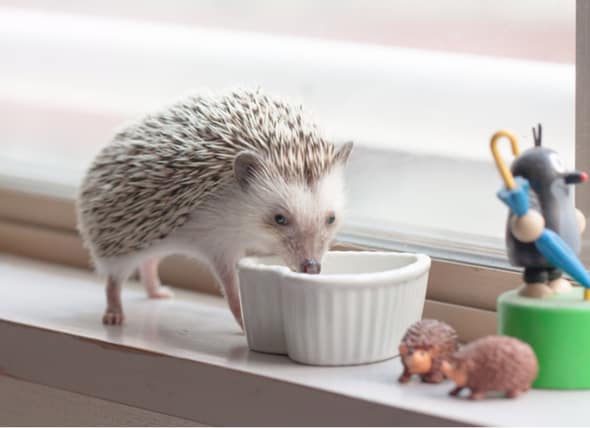
Four-Toed Hedgehog
Originating from Africa, this species is one of the most commonly domesticated breeds of hedgehog. Averaging a length of 5-12 inches and a lifespan of 4-6 years, four-toed hedgehogs are energetic creatures and should be given plenty of room to run around.
Like all hedgehogs, the four-toed hedgehog is a primarily nocturnal creature but can also be active during the day. They are the only hedgehog species allowed to be domesticated under European law, likely because they aren’t native to the European continent.
African Pygmy Hedgehog
Pygmy hedgehogs are actually a hybrid breed, the result of interbreeding between four-toed and Algerian hedgehogs. They are popular for the gentle nature, though like other hedgehogs they are naturally shy–regular socialization will warm them up to their owners. This is the breed most commonly sold in pet stores, alongside the four-toed hedgehog.
Long-Eared Hedgehogs
Long-eared hedgehogs come in 2 breeds…
The Egyptian Long-Eared: Whose habitat is largely comprised of the Middle East and Central Asia, northern Egypt is only a small fraction of their range
The Indian Long-Eared: which lives in northern India and Pakistan.
Their ears serve 3 main purposes. They allow the hedgehog to keep its body temperature stable in the desert heat, detect food buried beneath the sand, and identify nearby predators.
They aren’t as timid as their relatives, opting to charge at a potential threat instead of curling into a ball. Long-eared hedgehogs are also rather effective at pest control in their native countries, since insects make up 70% of their diet.
European Hedgehog
Also known as the common hedgehog, European hedgehogs are found throughout continental Europe. Since they are used to colder climates, these hedgehogs go into hibernation once it gets closer to winter. European hedgehogs have the longest lifespan of any hedgehog species: they have been reported to live at least 10 years, though in the wild they will live closer to 3.
European Hedgehogs are a protected species in almost every European country. Thus, the distribution and domestication of European hedgehogs is illegal; however, some countries tend to make exceptions for those who foster hedgehogs in the winter.
(As long as they are returned to the wild by spring).
Do Hedgehogs Make Good Pets?
Like any domestic animal, hedgehogs require a lot of attention to keep them happy and healthy. Whether or not they end up being a good pet depends on how much effort their owner puts into caring for them.
What makes raising a hedgehog seem daunting is that hedgehogs are more delicate than most animals, and their behaviors are more subtle.
Hedgehogs are naturally curious, but also incredibly shy. They don’t do much aside from explore their surroundings, and since they’re nocturnal they might just sleep while you’re awake.
They make a variety of noises to express themselves, but it might take time to piece together what each call means. Hedgehogs also need a stable environment with stable temperatures: drastic changes can cause them unneeded stress and may even kill them.
There are a lot of nuances to hedgehogs, so should do their research. Even experienced pet owners may need to pay extra attention, but if a hedgehog is cared for properly, it will be a gentle and loving pet.
Can Hedgehogs Hurt You?
One of the concerns people have surrounding domesticated hedgehogs is getting hurt from their quills.
It’s a genuine concern, but not as severe as most might think.
Hedgehog quills are controlled by a series of muscles which run along their back. When the hedgehog is relaxed, so are these muscles–the quills are laid flat and aren’t as likely to injure someone. When the hedgehog feels threatened, the muscles tense and the spines spread out, revealing their pointed edges.
Baby hedgehogs have sharper spines than adults, but these gradually fall away as they mature. Some hedgehogs wind up having sharper quills than others, but this is nothing more than a genetic trait. Hedgehog quills also lack barbs, which is another thing distinguishing them from porcupine quills.
Most hedgehog quills aren’t sharp enough to break the skin, though they can cause some discomfort. The best way to handle a hedgehog without hurting yourself is to wait until the hedgehog is calm before holding them.
Note: Petting a hedgehog isn’t recommended, no matter how comfortable it is around humans. Hedgehogs don’t like the sensation of being pet, and this could cause them stress–which means they extend their quills and end up pricking your hand.
